Low hemoglobin, also known as anemia, is one of the most common complications of cancer disease. Cancer is an unusual growth of cells that can develop in any body part. Many different types of cancers exist, and each affects the body differently. This blog will discuss what type of cancer causes low hemoglobin and its associated symptoms. We’ll also consider the causes of low hemoglobin and treatment options to help restore healthy levels.
Cancer can cause various other health concerns, such as fatigue, weakness, and fatigue. Low hemoglobin, or anemia, is a medical state in which your body doesn’t have adequate healthy red blood cells to supply oxygen.
One of the common complications of cancer is anemia, a condition in which the hemoglobin level in the body is lower than usual. Hemoglobin plays a vital role in supplying oxygen to different body parts, and the decrease in hemoglobin levels resulting from various types of cancers significantly affects a patient’s quality of life. Ultimately, the goal of any cancer treatment is to restrict the number of cancer cells and thereby improve the patient’s quality of life. In some cases, anemia is caused by a lack of iron or other vitamins and minerals, such as vitamin B-12. In other cases, anemia is caused by diseases or conditions, such as cancer.
Cancer can destroy healthy red blood cells or bone marrow, responsible for making red blood cells. This can lead to a decrease in hemoglobin levels in the blood, resulting in anemia. It is better to stay aware of anemia signs and symptoms to treat and manage it adequately.
Also Read: Impactguru hospital finder tool India
Table of Contents
Importance of Hemoglobin in the Body
To understand the significance of low hemoglobin in the context of cancer, it is crucial to understand its role in the body. Hemoglobin is a protein molecule that is available in red blood cells. It is responsible for taking oxygen from the lungs throughout the body. Hemoglobin also helps in carrying carbon dioxide from the cells to the lungs for expulsion. Essentially, hemoglobin is a crucial mediator in maintaining the body’s oxygen balance and supporting cellular metabolism.
A healthy individual has a hemoglobin level of 12 to 16.5 grams per deciliter. In individuals with cancer, the hemoglobin level may be significantly lower. Low hemoglobin levels can lead to fatigue, shortness of breath, paleness, coldness in the hands and feet, dizziness, headache, and chest pain. Without enough hemoglobin, the body’s organs and tissues can’t function properly. Low hemoglobin levels can also increase the risk of infection and make it harder for wounds to heal. If left untreated, anemia can be life-threatening.
Types Of Cancer That Cause Low Hemoglobin
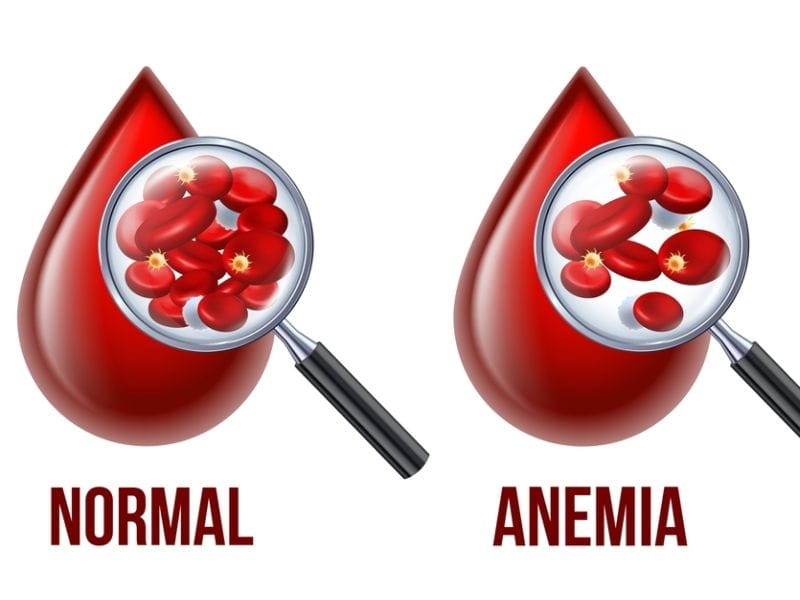
Leukemia
Leukemia is a kind of cancer that forms in the blood-producing cells in the bone marrow. It leads the body to make too many unusual white blood cells, which can crowd out normal cells, including red blood cells. It can cause low hemoglobin levels due to the destruction of the red blood cells. Leukemia is categorized into two main types: acute and chronic. Acute leukemia progresses quickly and needs immediate treatment, while chronic leukemia develops more slowly and may need to be monitored closely.
Lymphoma
Lymphoma is a cancer originating in the lymphatic system, which plays a vital function in the body’s immune response. It can cause the lymph nodes to become enlarged due to the accumulation of cancerous cells, which can lead to low hemoglobin levels. Lymphoma is divided into two main types: Hodgkin lymphoma and non-Hodgkin lymphoma. Treatment options for lymphoma include chemotherapy, radiation, targeted therapy, and stem cell transplants.\
Multiple Myeloma
Multiple myeloma is a kind of cancer type that destroys plasma cells, which are part of the immune system. It causes the production of abnormal plasma cells, which can accumulate in the bone marrow and interfere with the development of healthy red blood cells. This can lead to low hemoglobin levels. Multiple myeloma can vary in severity and is often diagnosed at an advanced stage. Treatment options include chemotherapy, targeted therapy, and stem cell transplants.
Myelodysplastic Syndromes (MDS)
Myelodysplastic syndromes are part of disorders characterized by abnormal blood cell production in the bone marrow. In MDS, the bone marrow fails to produce enough healthy blood cells, including red blood cells, resulting in low hemoglobin levels and anemia. MDS can vary in severity and be divided into three main types based on the number of abnormal cells present. Treatment options for MDS include chemotherapy, targeted therapy, and stem cell transplants.
Bone Marrow Metastasis
Cancers can sometimes spread to the bone marrow, where they can interfere with the production of healthy red blood cells. This can lead to low hemoglobin levels. Bone marrow metastasis can occur when cancer starts developing in other body parts, such as the liver or lungs. Treatment for bone marrow metastasis depends on the type of cancer. Common treatment options include chemotherapy, targeted therapy, radiation, and surgery.
Mechanisms Of Low Hemoglobin In Cancer Patients

Bone Marrow Suppression
One of the main mechanisms of low hemoglobin in cancer patients is bone marrow suppression. Cancer can interfere with the bone marrow’s ability to produce enough healthy red blood cells, leading to low hemoglobin levels. This is particularly true for patients with leukemia or multiple myeloma. Certain chemotherapy drugs can also cause cancer-related bone marrow suppression. Chemotherapy drugs can kill both healthy and cancerous cells, decreasing healthy red blood cells.
Hemolysis
Hemolysis is a process in which red blood cells are damaged faster than the bone marrow can replace them. This can be caused by certain infections, such as malaria or babesiosis, as well as some types of cancer. Cancer can cause the body to produce antibodies that can attack and destroy healthy red blood cells, decreasing hemoglobin levels. This process is often seen in individuals with leukemia or lymphoma.
Anemia Of Chronic Disease
Anemia of chronic disease (ACD) is a type of anemia caused by chronic health problems, such as cancer. It occurs when changes in the body’s immune system, caused by chronic disease, lead to the destruction of healthy red blood cells. This can result in a decrease in hemoglobin levels. ACD is more common in people with certain types of cancer, such as multiple myeloma, lymphoma, and leukemia. ACD is also seen in people with chronic kidney disease and other chronic health problems.
Nutritional Deficiencies
Nutritional deficiencies can also lead to low hemoglobin levels. This is often seen in individuals who don’t eat a balanced diet or consume enough vitamins and minerals, such as iron. Iron is necessary to develop healthy red blood cells, and a lack of it can decrease hemoglobin levels.
Cancer can sometimes increase the need for certain vitamins and minerals, such as iron. Additionally, chemotherapy and radiation therapy can make it difficult for the body to consume the nutrients it needs. For this reason, cancer patients must eat a well-balanced diet and take any necessary supplements to ensure they get the nutrients they need.
Diagnosis And Evaluation
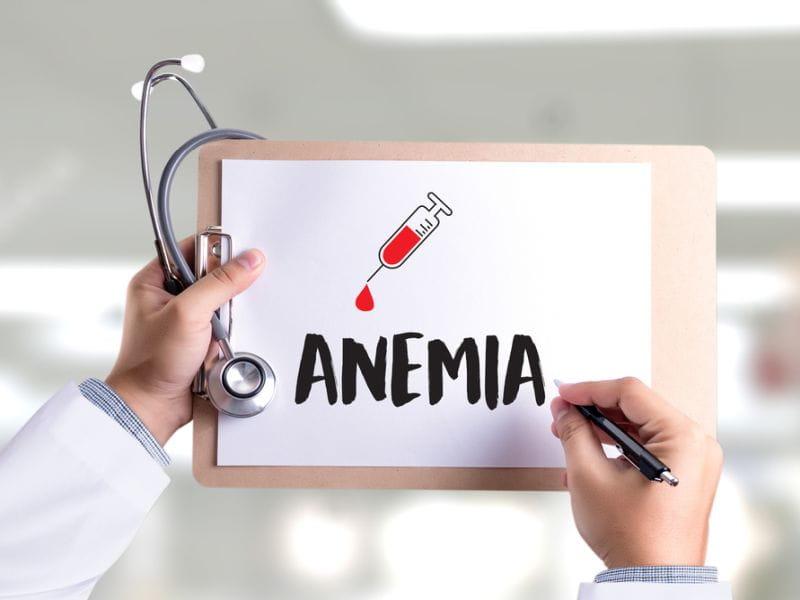
Blood Tests
Blood tests are the most common medium to diagnose anemia in cancer patients. These tests measure the hemoglobin levels in the blood and can also detect other conditions, such as iron or vitamin deficiencies. Other blood tests, such as white blood cell count and an electrolyte panel, can be used to check for infections, organ damage, and other underlying conditions that can cause anemia. Further testing may be needed if these tests suggest that the person has anemia.
Bone Marrow Biopsy
A bone marrow biopsy may be prescribed to confirm a diagnosis of anemia in cancer patients. During this medical procedure, a small sample of bone marrow is taken from the hipbone and evaluated under a microscope to detect signs of cancer or other abnormalities. A bone marrow biopsy can also rule out other conditions, such as iron or vitamin deficiencies, that can cause anemia. In addition, it can help determine the extent of the cancer and help guide treatment decisions.
Imaging Studies
Imaging studies, like X-rays, CT scans, and MRIs, can detect cancer in the body and evaluate how it affects the bone marrow. These diagnostic tests can also be used to assess any enlarged lymph nodes or other abnormalities that may be present.
Additional Diagnostic Tests
Additional diagnostic tests, such as genetic tests or flow cytometry, may be recommended to help diagnose anemia in cancer patients. These tests can identify specific genetic mutations or biochemical markers that can help determine the type and extent of cancer.
Treatment Options
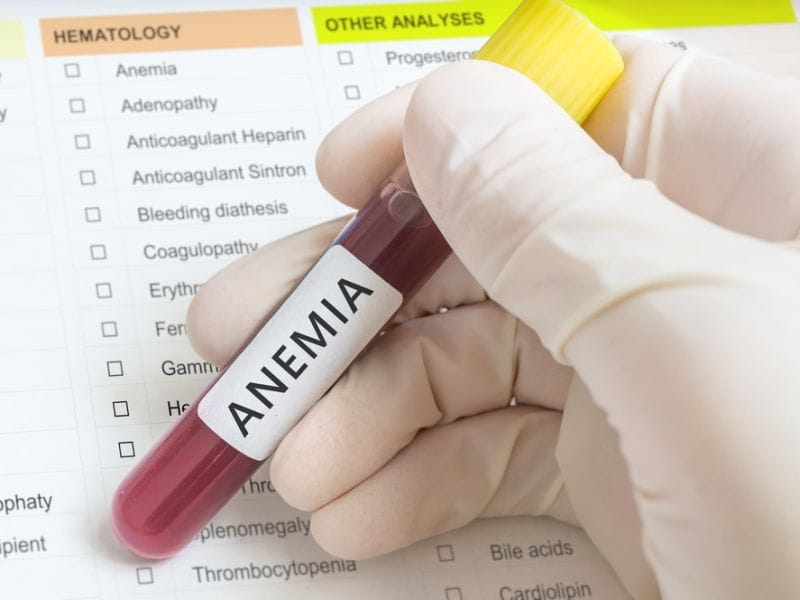
Blood Transfusions
Blood transfusions can be used for anemia treatment in cancer patients. During a transfusion, healthy red blood cells are given to the patient to help increase their hemoglobin levels. Transfusions are most commonly used in cases of severe anemia, as they provide immediate relief. They can also be employed in cases of chronic anemia to help improve the person’s quality of life.
Iron Supplementation
Iron supplements can be used for anemia treatment caused by iron deficiency. These supplements can help to replace the lost iron, which can help to increase hemoglobin levels. Iron supplements may also be recommended in cases of anemia caused by cancer. Although they may not be effective in treating cancer itself, they can help to reduce the severity of the anemia.
Erythropoiesis-Stimulating Agents (ESAs)
Erythropoiesis-stimulating agents (ESAs) are medications that can help increase the red blood cell count. These medications work by stimulating the bone marrow to produce more red blood cells. ESAs are usually used in cases of anemia associated with cancer or other chronic health conditions. They can help to restrict the need for blood transfusions and improve the person’s quality of life.
Treating The Underlying Cancer
Treating the underlying cancer is crucial in managing low hemoglobin levels. Cancer treatments, like chemotherapy, radiation therapy, or targeted therapies, can target and reduce cancer cell growth, potentially improving the bone marrow’s ability to produce healthy blood cells. Based on the kind & stage of cancer, various treatment modalities may be employed to control or eradicate cancer, which can indirectly help normalize hemoglobin levels.
Prevention And Management Strategies
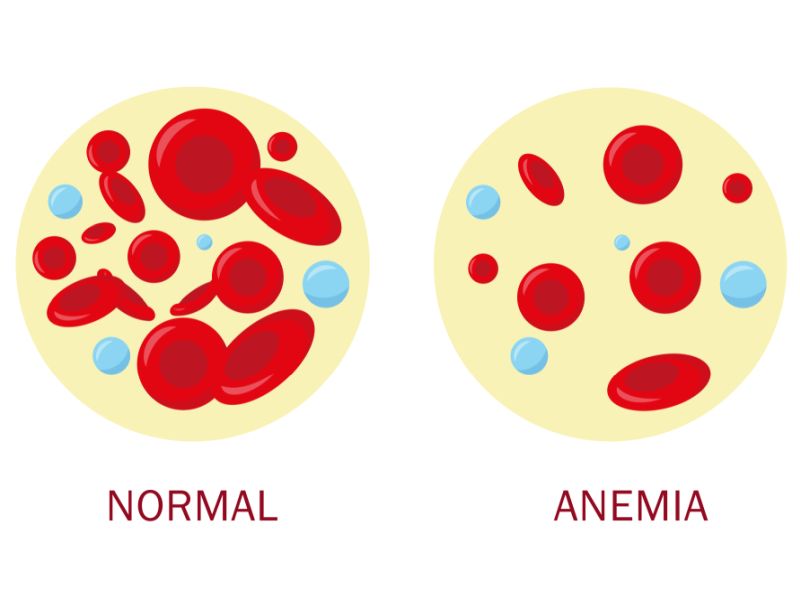
Regular Monitoring
Regular monitoring is an essential component of managing anemia in cancer patients. It is important to monitor the person’s hemoglobin levels and other blood work, such as white blood cell count and electrolyte panel, to ensure the anemia is not progressing or worsening. Monitoring can also help detect any other issues, such as nutritional deficiencies or infections, that may contribute to anemia.
Nutritional Support
Addressing nutritional deficiencies is crucial in managing low hemoglobin levels. Cancer patients may benefit from working with a registered dietitian or nutritionist to ensure adequate intake of essential nutrients, including iron, vitamin B12, and folate. Dietary modifications, oral supplements, or intravenous nutrition may be recommended based on individual needs.
Addressing Underlying Conditions
It is important to find & address any underlying conditions contributing to the anemia. This can include infections, organ damage, or other chronic health problems. It is crucial to treat any underlying conditions to stabilize and manage the person’s hemoglobin levels.
Patient Education and Support
Patient education and support are critical components of managing anemia in cancer patients. The patient must understand the condition, treatment options, and how to manage their symptoms. Patients also need emotional support to help them cope with the diagnosis and treatment. This can include talking with family and friends and visiting support groups to connect with others facing similar challenges.
Conclusion
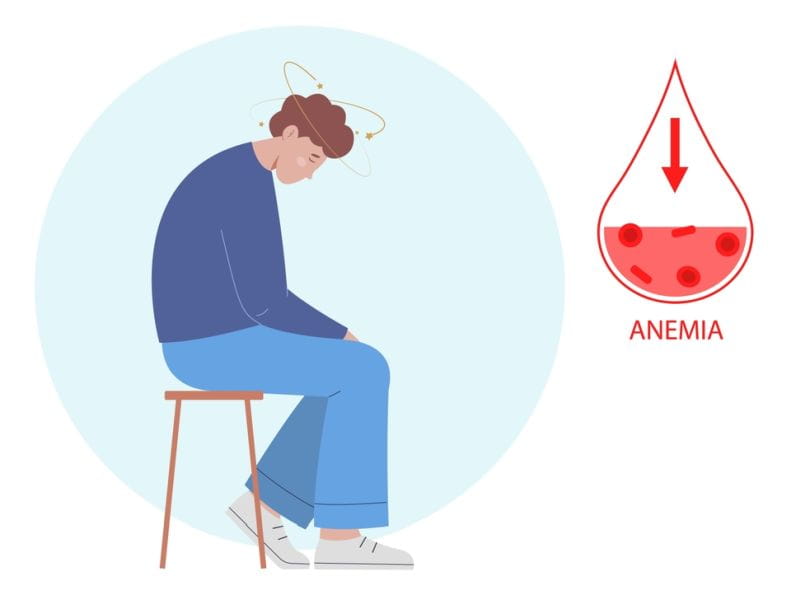
Summary of Key Points
Anemia is one of the common cancer complications and can have a considerable negative influence on the patient’s quality of life. Cancers, including leukemia, lymphoma, multiple myeloma, myelodysplastic syndromes, and bone marrow metastasis, can cause low hemoglobin levels. The mechanisms of anemia in cancer patients include bone marrow suppression, hemolysis, anemia of chronic disease, and nutritional deficiencies.
Diagnosis of anemia in cancer patients involves blood tests, bone marrow biopsies, imaging studies, and additional diagnostic tests. Treatment options for anemia in cancer patients include blood transfusions, iron supplementation, erythropoiesis-stimulating agents, and underlying cancer treatment. Prevention and management strategies for anemia in cancer patients include regular monitoring, nutritional support, addressing underlying conditions, and patient education and support.
Understanding the types of cancer associated with low hemoglobin, the underlying mechanisms and causes, and the available treatment options are crucial for effective management. Timely diagnosis and intervention, coupled with appropriate cancer-specific treatments and supportive measures, can help mitigate the effects of anemia and improve the patient’s prognosis.
Close collaboration between oncologists, hematologists, and supportive care teams is essential in providing comprehensive care to individuals with cancer-related low hemoglobin, ensuring the best possible outcomes in their fight against cancer and anemia. By addressing anemia, healthcare professionals can enhance the overall treatment experience and quality of life for cancer patients.
Future Research and Development
Further research is required to learn better the mechanisms and risk factors associated with low hemoglobin levels in cancer patients. This research can contribute to developing targeted interventions and personalized treatment approaches. Future research and developments in the field will focus on understanding the underlying mechanisms of anemia in cancer patients and discovering new treatments to improve the patient’s quality of life. Additionally, there is a need for better methods of detecting anemia in cancer patients to ensure that it can be quickly and accurately diagnosed.
Fundraising in India can be an effective way to help cancer patients cover the high cost of cancer treatment. India has a growing ecosystem of organisations, websites, and applications dedicated to helping cancer patients raise funds for their treatment. With access to a vast network of donors in India and abroad, cancer patients can expand their fundraising efforts and quickly raise the necessary funds to finance their treatment.
This kind of fundraising also helps to build a community of support and hope around patients and their families, making the journey during this difficult time easier. Moreover, donations made to charitable organisations are often tax deductible, which makes fundraising an attractive option for individuals with sufficient financial means to contribute to a noble cause.












